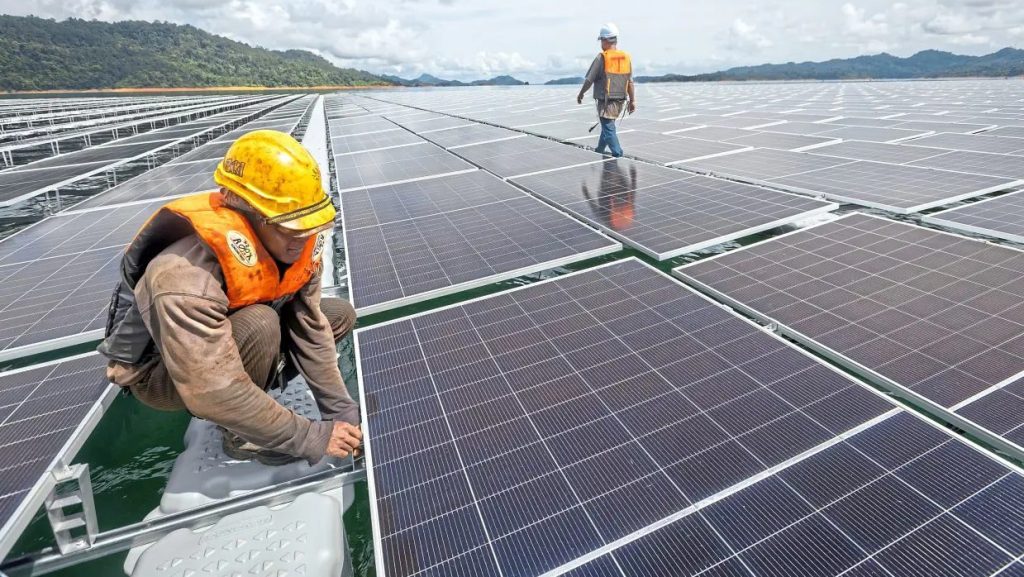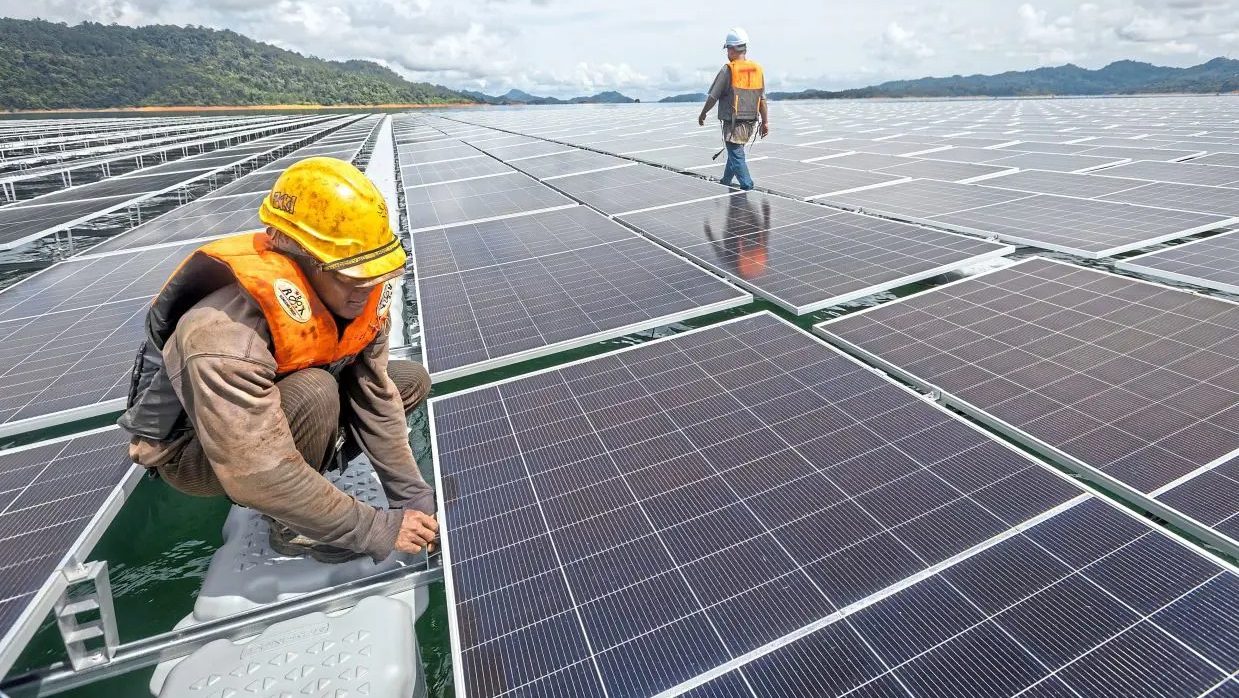Advertisements
Premier Abang Johari Highlights Batang Ai Reservoir’s Capacity for Solar Power

Floating Solar Project at Batang Ai: A Step Towards 2,000MW
KUCHING: In an ambitious move towards renewable energy, Sarawak has set its sights on harnessing the power of the sun through floating solar farms. Premier Tan Sri Abang Johari Tun Openg recently highlighted the vast potential for power generation from the Batang Ai hydroelectric plant (HEP) reservoir. With the ability to scale up to 2,000MW, the project promises significant advancements in sustainable energy for the region.
Batang Ai Floating Solar Farm Nears Completion
Sarawak Energy Bhd (SEB) is at the forefront of this green energy revolution with its Batang Ai floating solar farm. Set to generate 50MW upon completion in October, the farm is poised to be a landmark project. Covering only 2% of the reservoir’s 8,500ha surface area, it leaves substantial room for expansion.
“From my calculations, if we use 60% of 8,500ha, the potential solar energy we can produce is about 2,000MW,” stated Abang Johari. This calculation opens up exciting possibilities for the future of solar energy in Sarawak.
Advertisements
Future Expansion Plans
Potential at Bakun and Murum Reservoirs
During his visit to the Batang Ai floating solar farm, Abang Johari also mentioned plans to explore floating solar projects at the Bakun and Murum reservoirs. These sites have potential capacities of 500MW and 600MW respectively.
“We have signed a memorandum of understanding with Masdar from the United Arab Emirates, who are interested in developing solar energy,” he added, emphasizing the state government’s commitment to expanding its renewable energy portfolio.
SEB’s Commitment to Renewable Energy
Batang Ai Project: A Milestone in Hybrid Energy Generation
SEB’s group chief executive officer, Datuk Sharbini Suhaili, shared that the Batang Ai project is set to become Malaysia’s largest floating solar plant and the first major hybrid generation system combining hydro and solar power.
“Through a joint venture with China Power International Holdings and Trina Solar, the floating solar project has achieved 35% progress and is expected to be commissioned by the end of October this year,” said Sharbini.
Environmental Impact and Future Prospects
Phase Two and Beyond
Once fully operational, the Batang Ai facility is expected to offset around 52 kilotonnes of emissions annually, contributing significantly to the decarbonization of Sarawak’s power system. SEB is also conducting feasibility studies for a second phase of the floating solar facility at Batang Ai, with a potential capacity of up to 160MW.
“Ultimately, Sarawak Energy remains fully committed to exploring floating solar at Batang Ai HEP and beyond, with the eventual completion of this initial floating solar project in October being the first step,” Sharbini affirmed.
Conclusion
The prospects for solar power generation in Sarawak are promising, with the Batang Ai reservoir paving the way for significant advancements. As the state government and SEB continue to explore and expand floating solar projects, Sarawak stands to become a leader in renewable energy. The combination of hydro and solar power not only enhances energy security but also aligns with global efforts to reduce carbon emissions and combat climate change.

